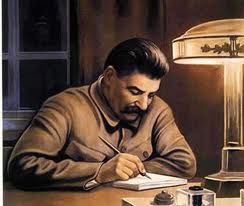Burn! (Italian title: Queimada) is a 1969 film directed by Gillo Pontecorvo; starring Marlon Brando. The plot is loosely based on events in the history of Guadeloupe. The movie was filmed in Cartagena de Indias
The main character is named after William Walker, the famous American filibuster. While based on issues that Walker symbolically represented, the film is not based on the life of Walker.
Plot[edit]
Sir William Walker (Marlon Brando), is an agent provocateur sent to the island of Queimada, a fictional Portuguese colony in the Lesser Antilles island group in the Caribbean. The film was originally set on a Spanish island called Quemada, meaning "burnt", but it was changed to Portuguese after the Spanish government found it insulting; however, the language spoken in the film remained Spanish.[1] Walker is sent to organize an uprising of black slaves to overthrow the Portuguese regime because Great Britain wants to get economic control of the island, as it is an important sugar cane producer.
The plan is to replace the Portuguese administration by a formally sovereign state controlled by white latifundists friendly to Great Britain. To realize this project, William Walker persuades the black slaves to fight for their liberation from slavery.
José Dolores (Evaristo Márquez) becomes the leader of the rebellion, while white political leaders assassinate the governor and establish a provisional government. After the overthrow of the Portuguese regime, British interests establish a corrupt puppet government, while Dolores is marginalized. Though slavery had formally ended and the former slaves in theory had rights, a legal and property system was established that forced them to continue to work in the sugar cane plantations in even worse conditions than before.
William Walker leaves the island after the revolution. He comes back to Queimada 10 years later, this time to destroy the black political movement he had helped create. José Dolores has taken Walker's ideas to heart and is now leading a rebelarmy against the British puppet regime in Queimada. Walker is now working for the Royal Sugar Company, which organizes its own army and manipulates Queimada politics directly, including ordering the execution of one of its puppet presidents. After this, British troops land on the island, contributing artillery and crack infantry for fighting the rebels. Their main strategy is setting fire to the forests and sugar-cane fields to draw out the rebels—a strategy that achieves its goal but also destroys the reason for Britain's interest in the island.
Eventually, the rebel army is defeated and Jose Dolores is captured. Dolores is offered his freedom in return for renouncing the rebellion. However, Dolores turns down this offer and is hanged, willingly sacrificing himself. The movie ends when Walker is killed by a man in the street, seemingly as revenge for Dolores's death.
Theme[edit]
William Walker was the name of a famous American filibuster who led a privately backed invasion of Nicaragua in the 1850s. He was overthrown when his government threatened the interests of railroad magnate Cornelius Vanderbilt. The chief protagonist's name and personality are oblique references to this person, although they are of different nationalities.
Brando had the opportunity to have a role on Butch Cassidy and the Sundance Kid but chose instead to work on this film. He also had to turn down a major role in Ryan's Daughter because of this film's production problems. In his autobiography Brando claims, "I did some of my best acting in Burn!".[2]
Critical response[edit]
The film received critical acclaim in the U.S. and abroad. Based on 11 reviews collected by Rotten Tomatoes, the film has an overall approval rating from critics of 82%.[3] By comparison, its 2004 re-release was given an average score of 72, based on 4 reviews, by Metacritic, which assigns a normalized rating out of 100 top reviews from mainstream critics.[4]
Davis (2002) reviews the film from a historian's perspective and gives it high marks. She says it merges historical events that took place in Brazil, Cuba, Santo Domingo, Jamaica, and elsewhere.[5]
References[edit]
- ^ Queimada (1969) at the Internet Movie Database
- ^ Brando, Marlon (1994). Brando: Songs My Mother Taught Me. New York: Random House. p. 364. ISBN 0-679-41013-9.
- ^ Queimada / Burn! / The Mercenary (1969) at Rotten Tomatoes
- ^ Burn! (re-release).
- ^ Natalie Zemon Davis, Slaves on Screen: Film and Historical Vision (2002) ch 3
Further reading[edit]
- Davis, Natalie Zemon. Slaves on Screen: Film and Historical Vision (2002) ch 3
- Martin, Michael T., and David C. Wall, "The Politics of Cine-Memory: Signifying Slavery in the History Film," in Robert A. Rosenstone and Constantin Parvulesu, eds. A Companion to the Historical Film (Wiley-Blackwell, 2013), pp. 445-467.
External links[edit]
- Burn! at the Internet Movie Database
- Detailed review at Film Comment by Amy Taubin
- The Ecology of Destruction by John Bellamy Foster
| Burn! | |
|---|---|

|
|
| Directed by | Gillo Pontecorvo |
| Produced by | Alberto Grimaldi |
| Written by |
Franco Solinas Giorgio Arlorio |
| Starring |
Marlon Brando Evaristo Márquez |
| Music by | Ennio Morricone |
| Cinematography | Marcello Gatti |
| Studio |
Europee Associate SAS Produzioni Europee Associati |
| Distributed by | United Artists |
| Release dates | 1969 |
| Running time | 112 min (U.S.) |
| Country | Italy |
| Language | Italian |
commenter cet article …



